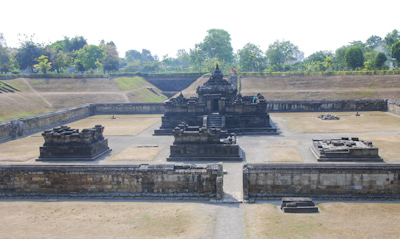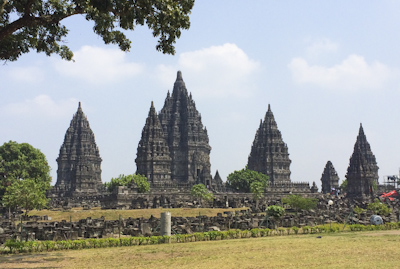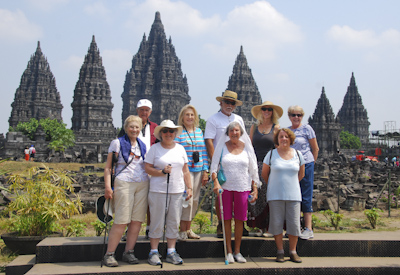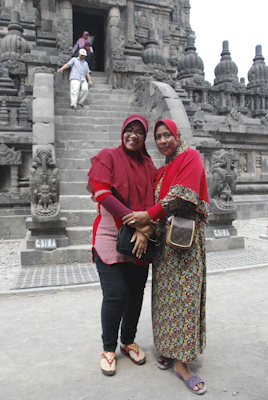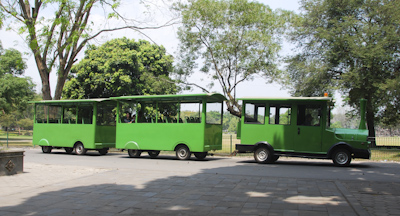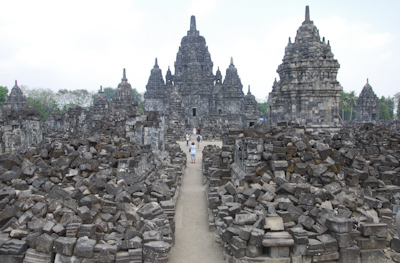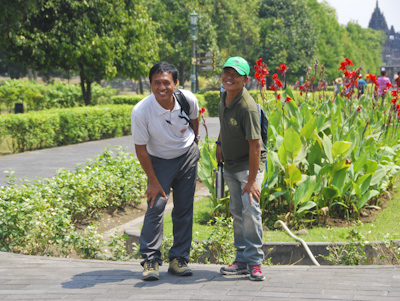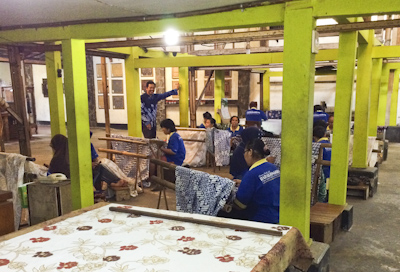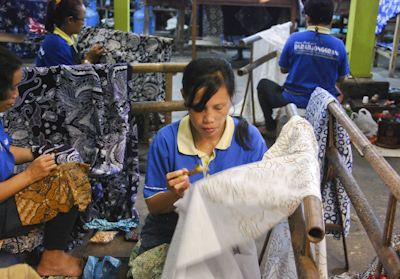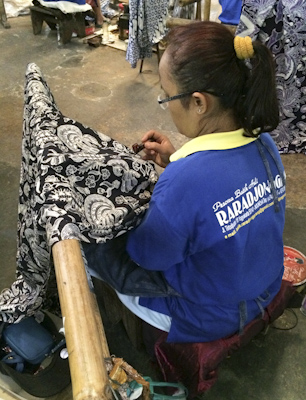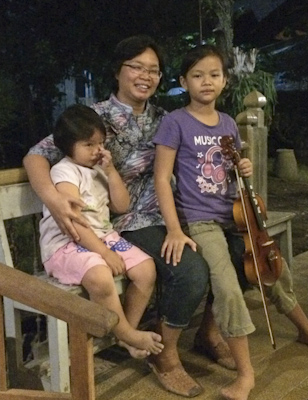Tuesday – August 18, 2015
The Muslim call to worship woke me up at 4:30 AM. I tried to fall back to sleep but was excited to start the day so I went down to breakfast about six o’clock. The buffet was incredible! There were at least fifty international choices offering omlettes, croissants, Chinese noodles, fried rice, puddings, congee, fish, several chicken dishes, many vegetable choices, and a huge variety of desserts.
At about eight o’clock, our small group boarded the bus and we drove to Candi Sambisari. ‘Candy’ is the Indonesian word for temple. Although the Hindu temple was constructed in the ninth century, it had remained hidden under layers of rock and sand from the eruption of Mount Merapi in 1906 and was rediscovered in 1966 by a farmer.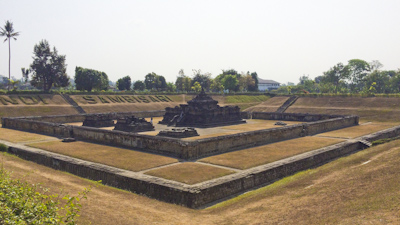
Sambisari Temple was located below ground level so we walked down stairs to the site and Josh explained the meaning of the figures and statues.
Josh explained the story of Ganesh who is one of the best known and most worshipped deities in the Hindu religion. He is revered as the remover of obstacles, the patron of arts and science, and the god of intellect and wisdom.
The Muslim family below said they often visited Candi Sambisari to picnic and enjoy the peace of the sacred site.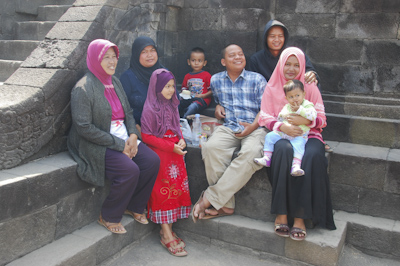
Afterwards, we drove to see the magnificent ninth century Prambanan Temple complex which is a UNESCO World Heritage Site. The Hindu temple was dedicated to the expression of God as the Creator (Brahma), the Preserver (Vishnu), and the Destroyer (Shiva).
The women in the photo above asked me to take a photograph with them. Afterwards, I asked them to pose for me. The tour group walked to a mini-train stop and we rode around the complex. The temples were significantly damaged during an earthquake in 2006. There were originally 240 temples in the complex.
On the way back to the hotel, we stopped at a ‘batik factory’. This is a technique of wax-resist dyeing. Wax is applied to a cloth, then the cloth is soaked in one color. The wax prevents the dye from coloring that area. The wax is removed with boiling water and the process is repeated if multiple colors are desired.
Indonesian batik made on the island of Java is famous for its diverse cultural patterns and is the most developed in terms of pattern, technique, and quality of workmanship. UNESCO designated Indonesian batik as a Masterpiece of Oral and Intangible Heritage of Humanity in 2009.
In the evening, our group divided and five of us has the opportunity to visit a local family for a “home-hosted dinner.” My group went to Hexa and Wawa’s house where we had a lovely time. The extended family included two daughters, a niece, Hexa’s brother, and a nanny. The 12 room house was built in 1920 and four generations of Hexa’s family had lived there. Hexa’s mother had been a midwife and had her birthing room in the house. Their older daughter played Ode to Joy on her violin to entertain us. They were charming hosts and we had a lovely evening. 
